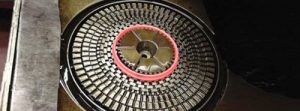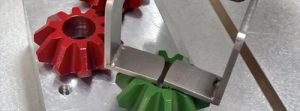
We recently finished up a Nadcap heat-treat audit at the facility where I work, and no matter how many times I think they are going to go smoothly with all the preparation we put in, they still require a sustained focus to get through. Moreover, there is always something that auditor is going to find. But I don’t fear the findings like I used to. Instead, I see the entire audit as a learning experience. Nadcap heat-treat audits are intense. From the 10 job audits you submit 30 days prior to the audit start date, to the witnessing of the comparison method SAT, there are many, many details that must be accounted for. Customer approvals must be documented and available. Fixed processes must be identified. ITAR and EAR restrictions must be made clear.
There must also be physical parts ready for heat treatment to cover the product mix and the subscribers involved on the audit scope. And even though an audit is a “snapshot” in time of how the process is operating, it can paint a picture as to how the system is running.
Working with the auditor
I’ve studied psychology for years, earning my master’s in psychology, writing self-help books, and now pursuing a Ph.D. in I/O psychology. So, when working with the auditor, you have to remember they are another person — even if they do seem kind of scary with so much riding on the audit results. You treat them with respect. You treat them as a person, not as a roadblock. I think of the book “How to Win Friends and Influence People” when interacting with people, about how others want a feeling of importance. The book cautions strongly against the use of flattery, instead taking on the perspective of seeing that person’s angle of what you are discussing as well as your own view.
The auditor is not there to consult, despite their impressive backgrounds and years of experience. They see the requirement in black and white. However, there are still opportunities throughout the audit in which both parties are learning. Recently, I got clarification on correction offsets and their use — how sensor correction factors can be set into an instrument and these being “correction offsets”. For the longest time, I only considered modification offsets when needing to adjust the controller to pass a TUS or calibration. In my pyrometry training years ago, I was told by instructor Jason Schulze never to use modification offsets, as you should fix the furnace. He burned that into me so thoroughly that I write those exact words into every heat-treat procedure I’ve ever written (I’ve worked at three different heat-treat facilities now).

When working with the auditor, make sure you bring things in a timely manner. Have everything set and anticipate what might be asked. The checklist questions, of course, give clear guidance, but maybe take into consideration being one step ahead and having the training documents ready to go for the heat-treat operator you know will be working the shift being audited.
I think the most important thing in the audit is to ask questions. Even though the auditor is asking the questions from the checklist, by asking your own questions it generates conversations. It brings about learning and realizations without crossing the line of consulting, which an auditor cannot do.
Work as an infinite game
This isn’t to imply that work is done in such a way as to please the auditors rather than how it would be done in ordinary circumstances. Remember, it’s ultimately about compliance to the customer requirements. There is a running joke during the years I’ve been in quality, that quality control functions like the “cops,” where they are trying to “control” production so they don’t go too fast and make mistakes. Quality can be seen as putting up roadblocks to producing parts, but production sometimes doesn’t realize it’s really to prevent the compa-ny from sailing off the edge of a road when the bridge is still being worked on — a furnace still requiring tuning to get it to pass a TUS, for example. You can’t ignore the caution signs.
Educating the team
Corrective actions are a part of growth. Yet, it’s the first question I’m always asked by management after an audit. And I get it. We strive for perfection. When I first used to get findings, I always felt it was like failing an exam. In school, we are so fixated on our grades that sometimes we forget what it is we are actually learning and why — that’s the part that matters. Corrections will only make us more reliable. Now I look at findings as opportunities to grow and use them as a team-building exercise.
Getting the team involved in the corrective actions is critical. I’m convinced that when people show up to work, they want to do their best. They don’t intend to make mistakes. So, treating the corrective actions as a learning experience is critical. Upper management sees the system as faulty because of the number of findings, but I see the system getting better. It’s how you look at failure. I first present the problem to the team as, often, the corrective action relates to something they are doing. From there we come up with the “why” it happened, and from that we indicate what could be done to prevent this from happening again.
When you get the team involved, they will be more committed to the process of coming up with a solution and actually implement that corrective action. But I frame the problem within the bigger picture — it’s just an instance where we made a mistake. It was immediate feedback to our process and does not define us.
Which leads to an important perspective after the audit. In manufacturing, we typically worry about the percentage of scrap, for example, and often overlook the 95 percent of product that was compliant. Findings have that same biased perspective of viewing what went wrong and overlooking what was done well throughout the audit. Which makes sense, because the audit is looking for what went wrong! Make sure to highlight the good and the findings to the team after every audit.






















